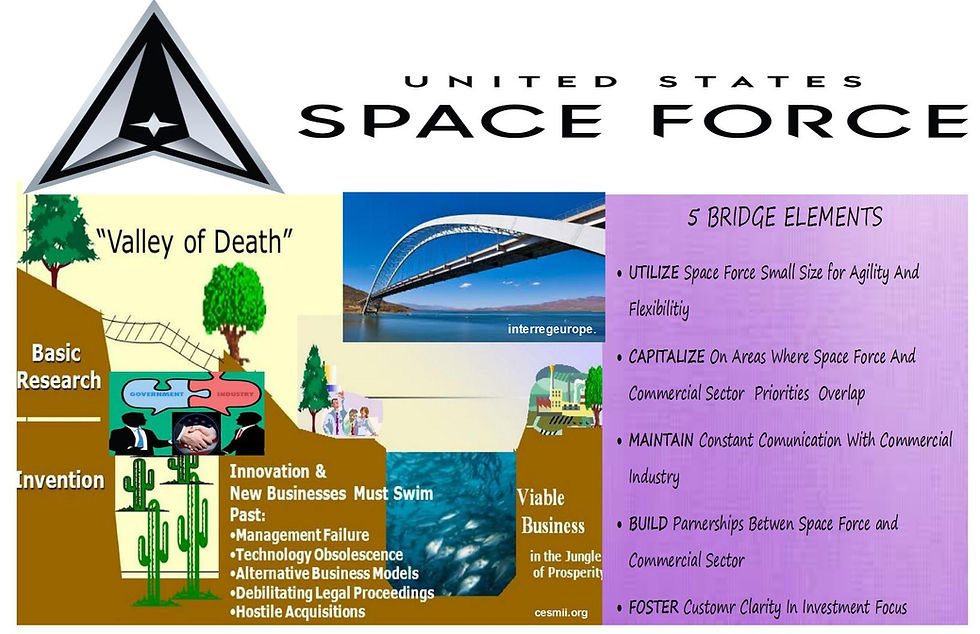Space Force Looks to Bridge the ‘Valley of Death’
- Ken Larson

- Mar 9, 2022
- 2 min read

“NATIONAL DEFENSE MAGAZINE” Mikayla Easley
“The Space Force is positioning itself to close the gap that often prevents the military from acquiring and fielding innovative platforms and systems, the service’s lead technology officer said March 4.
The Defense Department has been plagued by a phenomenon known as the “Valley of Death,” where novel technologies developed by industry fail to progress beyond a research-and-development phase and into large-scale procurement.
______________________________________________________________________________
“While the Pentagon has acknowledged it needs to address the gap across the department, Lisa Costa, the chief technology and innovation officer for the Space Force, said the military’s newest branch has an advantage due to its small size.
“While there are some challenges with that, the value of being small is that we can shepherd particular initiatives and activities and ensure that they are not even encountering that Valley of Death,” she said during a panel at the Air Force Association’s annual Air Warfare Symposium in Orlando, Florida.
Obtaining the advanced technology Guardians need to accomplish their missions will still be difficult, but Costa said she sees industry and the Space Force rising to the occasion.
It’s critical to”find opportunities that meet both industry’s needs and the Space Force’s needs,” she said.
The service plans to capitalize on areas where its priorities overlap with the commercial sector’s, Costa said. That way, the Space Force will not necessarily have to invest a significant amount of funding into new technologies, but rather into efforts aimed at building partnerships with the commercial sector, she added.
The “Space Force will not be the organization that puts, for example, IT infrastructure into space,” Costa said. “That’s really going to be the job of industry because they see the value of being able to provide cloud-based services globally — we want to take advantage of that.”
From an industry perspective, constant communication between the Space Force and the commercial sector helps companies make decisions on the best technologies to pursue and invest in, said Nicholas Bucci, the vice president of defense systems and technologies at General Atomics Electromagnetic Systems.
“In terms of the investment conversation, it is critical we look at the priorities we think our customers have, but clarity from our customers is really helpful in figuring out where we want to put those investment dollars,” Bucci said.
Frank DeMauro, the vice president and general manager of strategic deterrent systems at Northrop Grumman, pointed to the Space Force’s pursuit of other transaction authorities, or OTAs, as a positive step for faster acquisition.
OTAs are an acquisition strategy intended to bypass bureaucratic red tape and speed up prototyping and delivery of new capabilities to the military.
“What that enables us to do is have communications through the parts of the development process continuously so that we’re pointed down the right path,” DeMaruo said.
He added that, although the Space Force is slowly growing, the service’s size allows it to “do a very good job of focusing on exactly where to go to avoid the Valley of Death.”




Comments